Links:
IranVisitor.com
Blogs:
Bazaar Dispatch
Iran News Blog
Iran Travel & Tourism
Tools:
Calendar Converter

|
By: Bijan M. Sadeghi |
|
Esfahan: |
The vast province of Esfahan is located almost in the center of Iran between Tehran and Fars. The well-known Zayandehroud River flowing through the city with several bridges over it dating back to 300-400 years ago contributes to the beauty of this ancient city. In addition to being a unique cultural, historical and religious center, the city is famous for its rich precious heritage, its charming artworks and handicrafts as well as prominent scholars and scientists.
The main monuments of Isfahan are essentially the work of one man; Shah Abbas I (more commonly known as Shah Abbas the Great), who made the town his capital in 1598, and had it rebuilt with large avenues, magnificent gardens and a royal palace. During his reign, Isfahan was opened up to the outside world with the presence of a number of foreigners at the Safavid court - English and Dutch merchants, European artists, and diplomats hoping to secure alliances against the common Ottoman enemy - and became one of the most glorious cities of its time. The famous half rhyme "Isfahan nesf-eh jahan" (Isfahan is half the world) was coined in 16th century to express the city's grandeur. However, its period of glory lasted, for little more than 100 years. An invasion by the Afghans in the 18th Century, hastened the decline and the capital was subsequently transferred to Shiraz and then to Tehran.
Naqshe-Jahan Square is one of the largest in the world (500m x 160m) and was the symbolic centre of the Safavid Dynasty and its Empire. It was used for holding festivals, markets and games of polo. The original goal posts from Shah Abbas polo grounds are still in place today at the far ends of the square. The square is surrounded on all four sides by long walls with the Imam Mosque in the south, the Mosque of Sheikh Lotfollah in the east, the Ali Qapu Palace in the west and the entrance of the great Bazaar in the north.
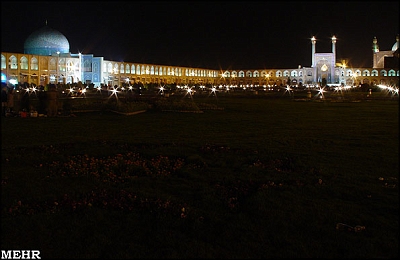
At the end of the Imam Square is one of the most stunning buildings in Iran, the Imam Mosque. Two turquoise minarets flank the huge gateway (27m high). Behind it and slightly to the right is the main dome (52m high) of the prayer hall. It was built over a period of 26 years and was eventually completed in 1638. In Shah Abbas impatience to see it finished, he attempted to hurry up the work by adopting a new method of glazed tile work, known as haft rangi (of seven colors). As a result, some sections are decorated with the new style and some with the old and these ornate tiles take on a different hue according to the light conditions.
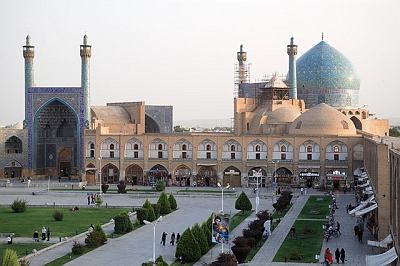
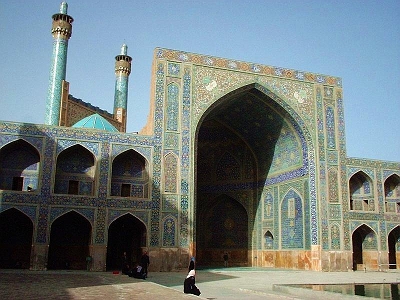
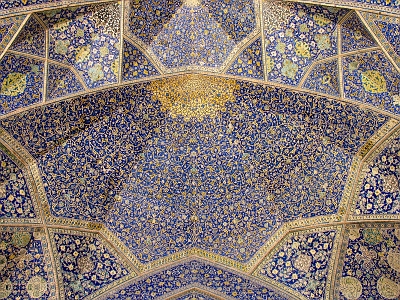
Sheikh Lotfollah Mosque was built during Shah Abbas time and dedicated to his father in law, Sheikh Lotfollah. The pale tiles on the dome change color from cream to pink, depending on the light conditions. It is one of the most beautiful and best historical monuments of Isfahan , which bewilders all its visitors. The mosque was once called the Women's Mosque, because there is apparently a tunnel between this mosque and the Ali Qapu Palace, allowing women from the old dynasties to attend prayers without being seen in public. It can be considered as the masterpiece of Iran's architecture and tile work in the first half of the 11th century A.H. (Hejira). The construction of this mosque took 18 years and its architect was Muhammad Reza Isfahani. Its manuscripts were written by Ali Reza Abbasi and Baqernia.
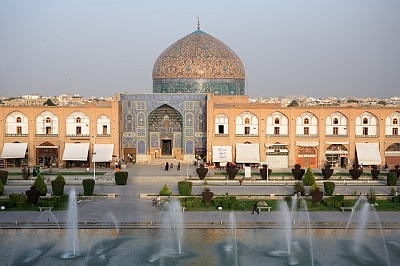
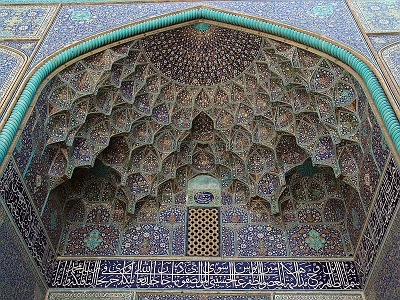
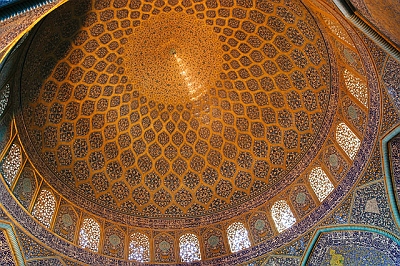
AliQapu Palace was built in the 18th century as a functioning seat of government, and included a huge pavilion from where the Safavid rulers could watch the activities in the square below. Unfortunately the Palace today is devoid of any furniture, and many of the Murals have been destroyed.
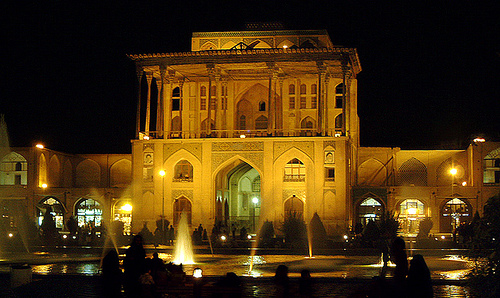
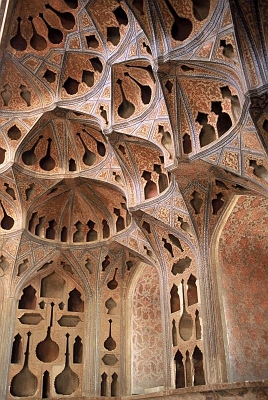
"Pol-e Khaju" was built by Shah Abbas II in 1650. It is 123 meters long with 24 arches, and it also serves as a sluice gate.
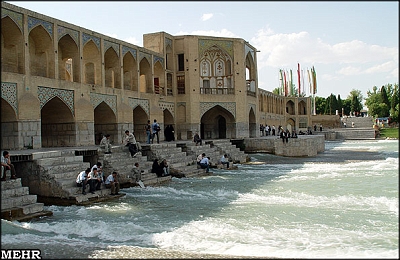
The "Si-o-Se Pol" or bridge of 32 arches is built during the rule of Shah Abbas the Great. It linked Isfahan with the Armenian suburb of Jolfa. It is by far the longest bridge in Isfahan at 295m.
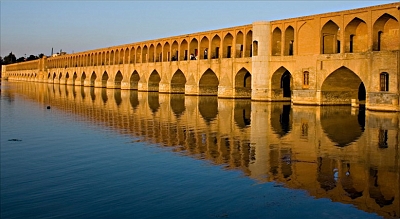
The Chehel Sotun palace was built as a reception hall by Shah Abbas II in 1647. It is set in the old royal park between the Ali Qapu Palace and the Chahar Bagh Avenue. The name means "The Forty Columns" and though there are only twenty columns of cypress wood, their reflections in the adjacent pool provide the other twenty. There is also a small museum inside the building. Six Friezes are painted on the upper part of the inside walls representing Safavid court life and their military exploits. Beneath these great scenes are smaller paintings, closer in style and subject matter to Persian miniature. Covered in plaster during the Qajar period, they have recently been carefully restored. All around the room are a series of Safavid objects including carpets, armor, porcelain and coins.
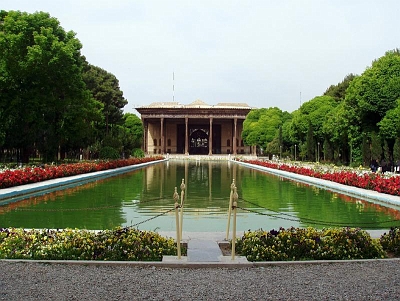


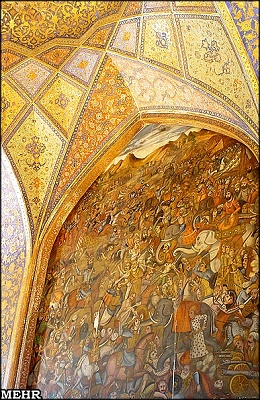
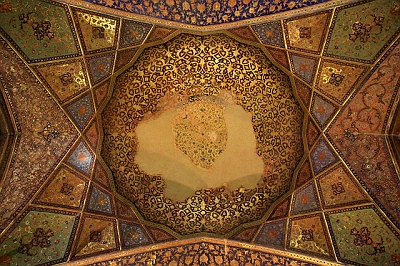
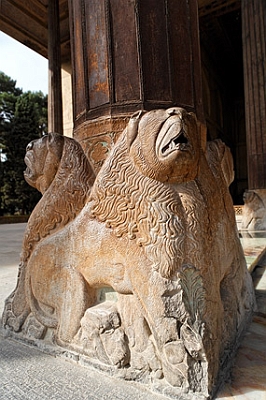
The most famous and beautiful Iranian church is "Vank". In addition to various wall paintings it possesses a great number of tableaus with religious themes, most of which have been brought here by the Armenian businessmen from Europe. The tableaus about Christ's (A.S.) arrest, the Last Supper etc. have decorated the walls of this church. There is a museum near this church , which has about 700 hand-written Armenian manuscripts. Also the first printed book in Iran can be found in this museum. In addition to Vank , other churches such as the churches of holy Mary and Jolfa can be found in Isfahan.
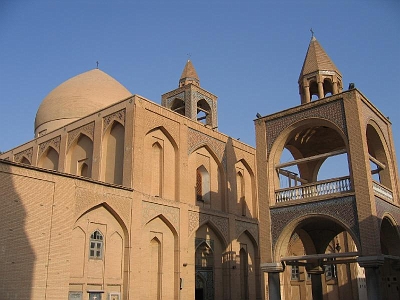
.jpg)
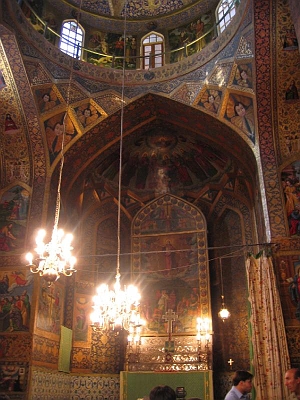
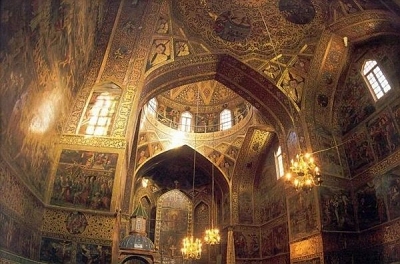
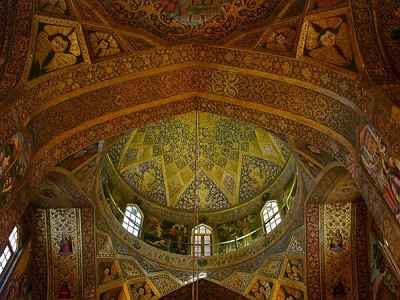
The Chahar Bagh school was built during Soltan Hossein, a Safavid king, to serve as a theological and clerical school to train those who were interested in such sciences. In order to finance the school, Soltan Hossein's mother had a large caravansary built nearby, the income of which went to the Foundation. The monumental portal from the main avenue of Shah Abbas leads directly into a domed octagonal vestibule. The dome and the greater part of the walls are covered in bright yellow bricks which give a feeling of lightness. The entrance gate decorated with gold facade and silver, and the tile-works inside the building are masterpieces of fine art and industry. The central court, with its pool and garden, are surrounded by arcades on two levels, each giving access to a student's room.
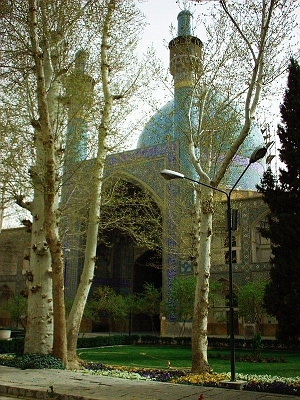
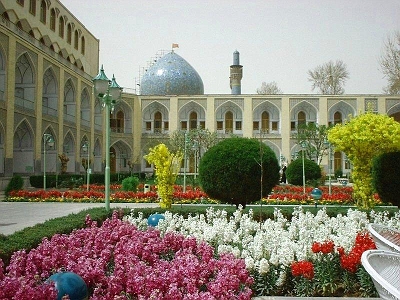
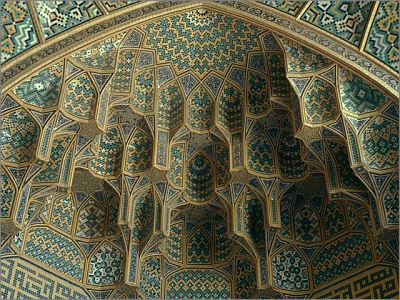
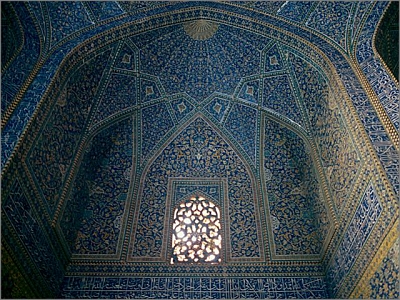
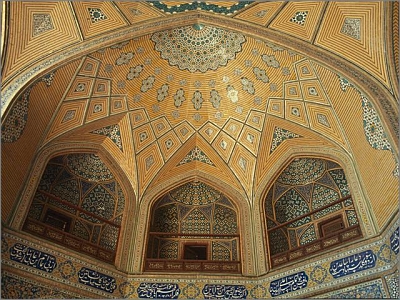
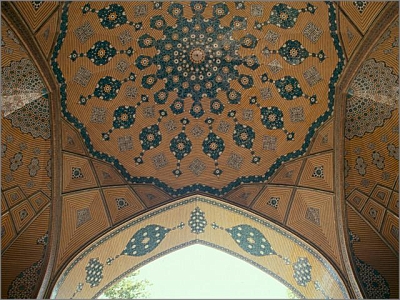
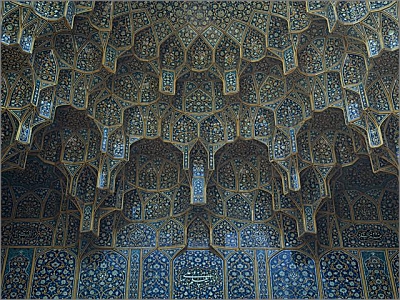
Seven kilometers west of the city of Isfahan, there are two tall minarets making up one of the most prominent historic monuments in this city, called Menar Jonban, translating into English as the moving minaret, because of their capacity to vibrate. The building consists of the mausoleum of a hermit named Amoo-Abdollah and two minarets and was built in 1316 AD. The gravestone bears the date 716 AH (1295 AD), contemporary with the reign of Oljaito, an Ilkhanid king. The building's porch is an example of architectural constructions of the Mongol era. Tiles used in the construction of the porch during the time of its construction have still remained despite passing of nearly seven centuries. The minarets were added to the monument most probably toward the end of the Safavid dynasty (1501-1736 AD); although the exact date of their construction is still unknown. What is exceptionally interesting about this monument is that its minarets are made in such a way that if one of them is moved not only the second one, but the whole building would shake. The height of the building from the ground level is 10 meters and the minarets are each 5.17 meters long.
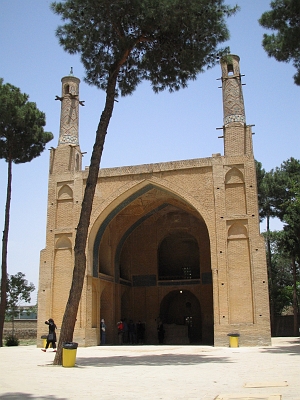
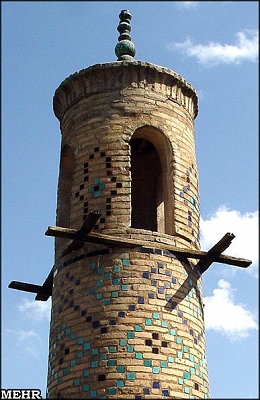
The Jame mosque contains within its walls a series of the architecture of various periods in history after the advent of Islam, In the surveys made during the digging of the wells, ceramics belonging to late Sassanid era were discovered.
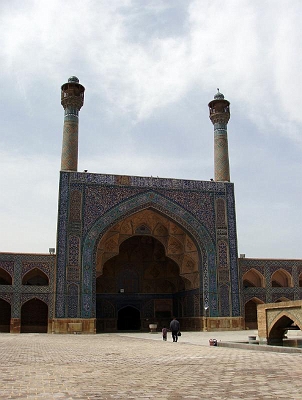
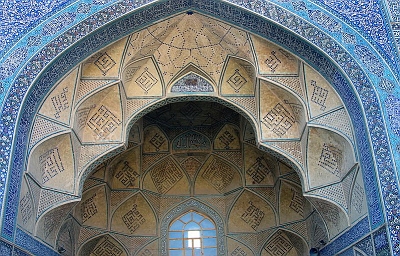
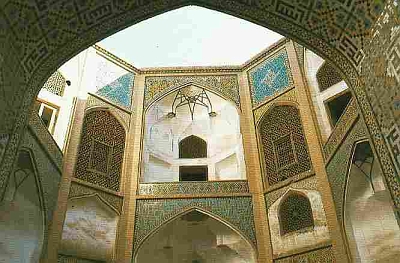
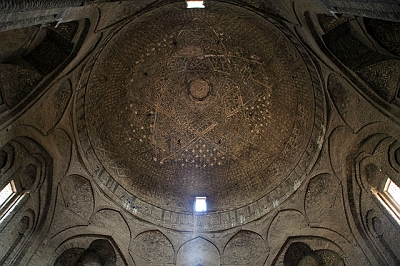
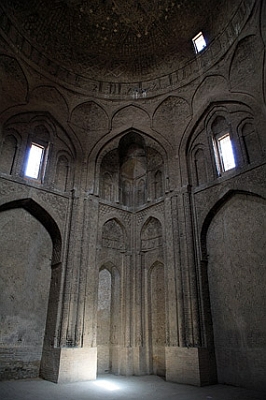
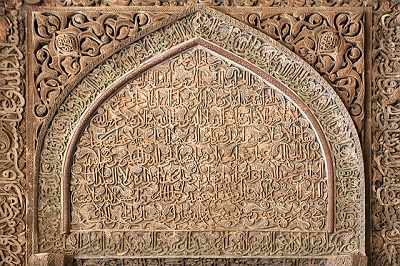
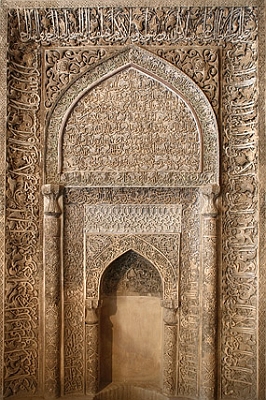
God Bless Esfahan!
Your Comment: |
|
| Rate : | |
| Name : | *Required |
| Email : | *Confidential |
| Comment : | |
 |
|